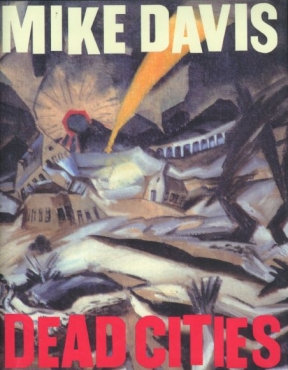Home-Front Ecology: What our grandparents can teach us about saving the world
By Mike Davis
Sierra Magazine

DOES THIS GENERATION OF AMERICANS have the "right stuff" to meet the epic challenges of sustaining life on a rapidly warming planet? Sure, the mainstream media are full of talk about carbon credits, hybrid cars, and smart urbanism--but even so, our environmental footprints are actually growing larger, not smaller.
The typical new U.S. home, for instance, is 40 percent larger than that of 25 years ago, even though the average household has fewer people. In that same period, dinosaur-like SUVs (now 50 percent of all private vehicles) have taken over the freeways, while the amount of retail space per capita (an indirect but reliable measure of consumption) has quadrupled.
Too many of us, in other words, talk green but lead supersized lifestyles--giving fodder to the conservative cynics who write columns about Al Gore's electricity bills. Our culture appears hopelessly addicted to fossil fuels, shopping sprees, suburban sprawl, and beef-centered diets. Would Americans ever voluntarily give up their SUVs, McMansions, McDonald's, and lawns?
The surprisingly hopeful answer lies in living memory. In the 1940s, Americans simultaneously battled fascism overseas and waste at home. My parents, their neighbors, and millions of others left cars at home to ride bikes to work, tore up their front yards to plant cabbage, recycled toothpaste tubes and cooking grease, volunteered at daycare centers and USOs, shared their houses and dinners with strangers, and conscientiously attempted to reduce unnecessary consumption and waste. The World War II home front was the most important and broadly participatory green experiment in U.S. history. Lessing Rosenwald, the chief of the Bureau of Industrial Conservation, called on Americans "to change from an economy of waste--and this country has been notorious for waste--to an economy of conservation." A majority of civilians, some reluctantly but many others enthusiastically, answered the call.
The most famous symbol of this wartime conservation ethos was the victory garden. Originally promoted by the Wilson administration to combat the food shortages of World War I, household and communal kitchen gardens had been revived by the early New Deal as a subsistence strategy for the unemployed. After Pearl Harbor, a groundswell of popular enthusiasm swept aside the skepticism of some Department of Agriculture officials and made the victory garden the centerpiece of the national "Food Fights for Freedom" campaign.
By 1943, beans and carrots were growing on the former White House lawn, and First Lady Eleanor Roosevelt and nearly 20 million other victory gardeners were producing 30 to 40 percent of the nation's vegetables--freeing the nation's farmers, in turn, to help feed Britain and Russia. In The Garden Is Political, a 1942 volume of popular verse, poet John Malcolm Brinnin acclaimed these "acres of internationalism" taking root in U.S. cities. Although suburban and rural gardens were larger and usually more productive, some of the most dedicated gardeners were inner-city children. With the participation of the Boy Scouts, trade unions, and settlement houses, thousands of ugly, trash-strewn vacant lots in major industrial cities were turned into neighborhood gardens that gave tenement kids the pride of being self-sufficient urban farmers. In Chicago, 400,000 schoolchildren enlisted in the "Clean Up for Victory" campaign, which salvaged scrap for industry and cleared lots for gardens.
To Read the Rest of the Essay
No comments:
Post a Comment